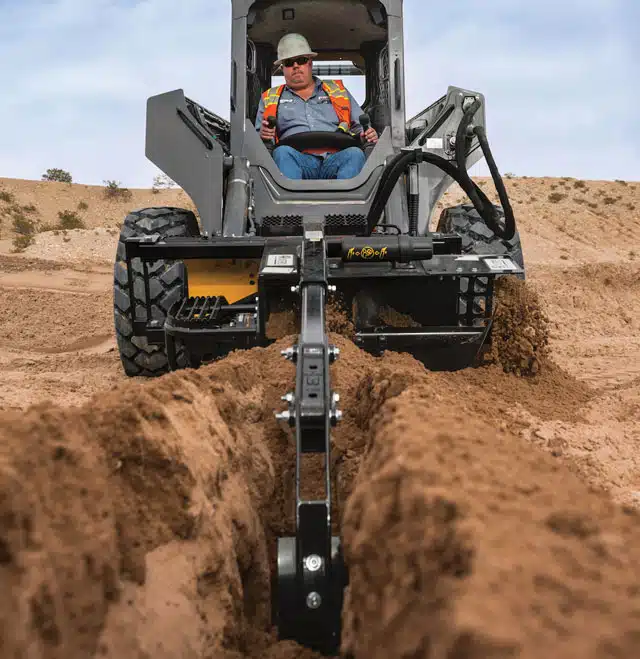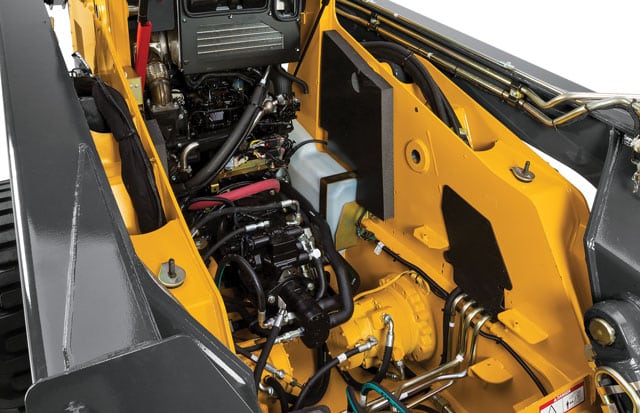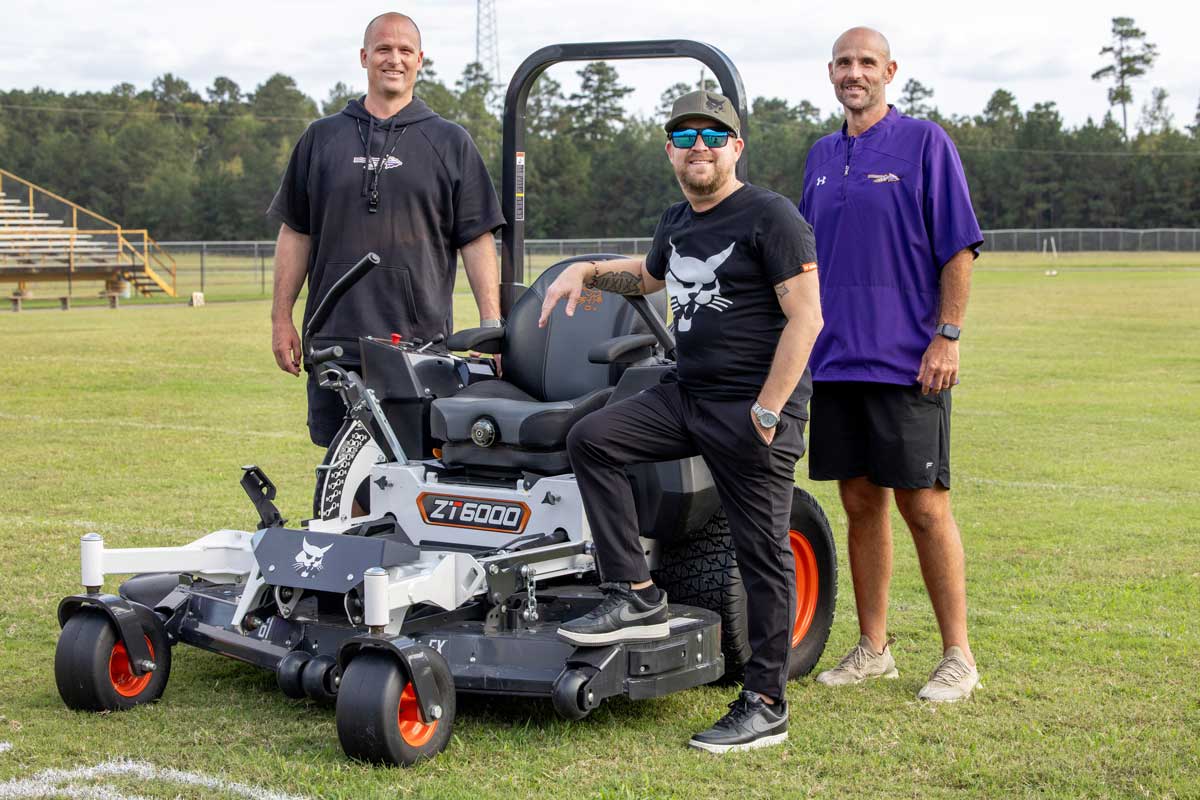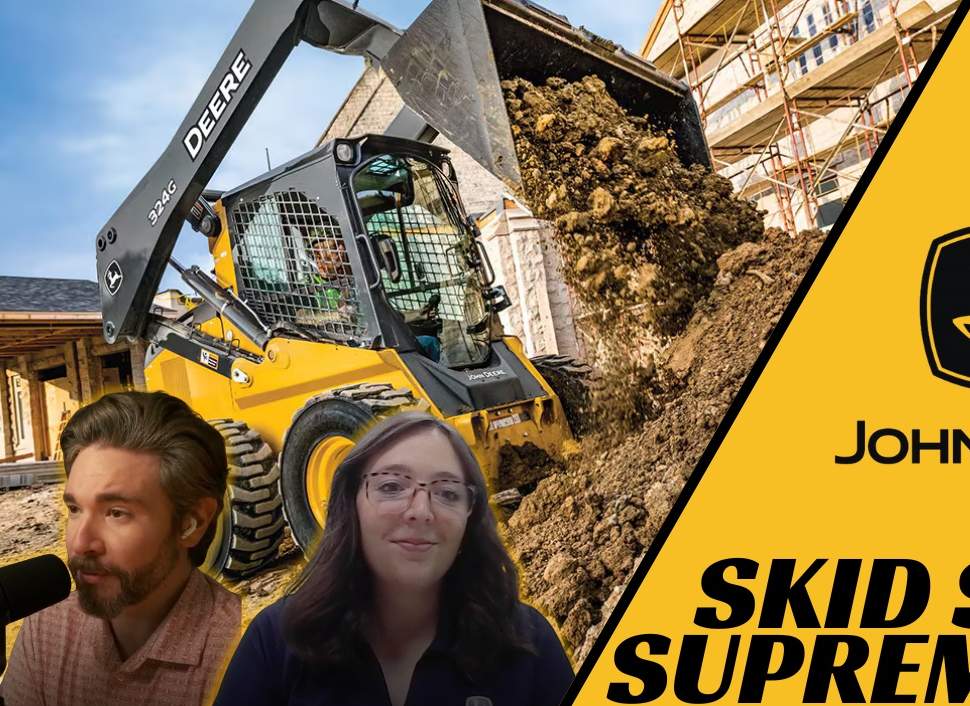Hydraulic Health: A Maintenance Guide to Maximize a Skid Steer/Track Loader’s Hydraulic System

There are hundreds of different attachments to choose from, so be sure that the flows and the pressures of the attachments are compatible with the machine.
When the first skid steers were produced in the late ‘50s and early ‘60s, attachment systems began as simple pin-on attachments. Since then, hydraulic systems were introduced and refined to optimize machine performance. Pumps, motors and valves evolved to become electronically controlled with precise metering, while hose and hydraulic components evolved to handle higher pressure and control everything from attachments to fans. What’s more, quick-couplers are now an industry standard, and in many applications, the skid steer loader is used only as an engine to run attachments. As a skid steer owner or operator, you should know how to properly maintain these systems to maximize the productivity of these do-everything, Swiss-Army-knife machines.
Follow the Operator’s Manual
The most important step to properly maintaining a skid steer’s hydraulics is following the service interval recommendations in the operator’s manual. Follow the instructions in your maintenance planner to maximize uptime. For Deere machines, check hydraulic oil levels daily and take hydraulic oil samples every 500 operating hours. For every 1,000 operating hours put on the machine, drain and refill the hydraulic oil, replace the filter and replace the hydraulic oil reservoir breather.
Use the Right Oil, and Change It Regularly
Unlike a car, the proper oil is imperative to the performance of skid steers. It’s nearly impossible to drain all the oil out of a skid steer (residual oil offers its own benefits, like keeping the pump cases full so operators don’t have to go through any special startup procedures after changing the oil). Certain oils don’t play well with other oils — if an incompatible oil is used it could lead to gelling, additive precipitation and other issues. Specific oils may also react poorly to the polymers in the coatings of parts and plastics within the machine.
The amount of oil owners need to put into skid steers is low, so it’s worth the small investment to ensure the type you use is well suited for your machine. Most manufacturers even offer their own brand of hydraulic oil to make things easier. For example, John Deere offers spec-tested Hydrau and Hydrau XR oil for skid steers. These oils are vigorously tested for optimal machine compatibility and are specifically formulated to handle different temperature ranges and offer peak machine performance. If you work in hot environments or have a clogged cooling package, be aware that it is easy to overheat your oil. While oil is resilient and can handle extreme temperatures, multiple overheats will break it down and cause it to lose its lubrication effects. Repeated over-heats will shorten the useful life of the oil, so you may want to consider shortening the change interval.
Address Problems Right Away
The hydraulic system on a skid steer is interconnected. Skid steers use one hydraulic reservoir for everything, so the entire system is at risk if there are problems with one component. Therefore, it’s vital to trust your warning lights. John Deere engineers conduct extensive assessments to ensure that false positives do not occur on filter clog codes. If you get a warning light telling you that the machine is clogged, then it’s clogged. If you ignore the clog filter indicator long enough, dirty oil will start bypassing the filter and will reach critical components, eventually taking out the machine’s entire hydraulic system. If your filter is clogged halfway through the filter life interval, take the opportunity to cut open the filter to see what’s clogging it. This can be an indicator of another problem in the machine and can be caught before it destroys the rest of the hydraulic system.
Similarly, if you have an attachment that fails on your machine, realize that this is a problem that is not limited to your attachment. While it’s necessary to fix the attachment and clean it up, the machine also needs to be cleaned as quickly as possible. This is because the debris from the failed attachment is shot right back into the hydraulic system, as there is no protection between the attachment and the machine. One little piece of dirt can cause a lot of damage, creating premature wear on critical components, cooling system clogging and overall performance issues. Be sure to keep service points clean and ensure that they have proper levels of fluids. This will keep the machine in optimal running condition and allow leaks to be easily identified.

The hydraulic system on a skid steer is interconnected. Skid steers use one hydraulic reservoir for everything, so the entire system is at risk if there are problems with one component.
Attachments Matter
There are hundreds of different attachments to choose from. When purchasing a new attachment, be sure to evaluate the range of motion against the machine and avoid those that make direct contact with the machine. This is especially important for grapple buckets that have swinging arms, because they can easily damage the auxiliary connectors. Also be sure that the flows and the pressures of the attachments are compatible with the machine. If they aren’t compatible, the machine and attachment are at risk of damage, pre-mature wear out or poor performance.
Know your duty cycle to optimize machine performance. Keep in mind if you use multiple attachments, or use those that are more rigorous than others, like mulchers or hammers. These tend to generate more debris and stress your machine’s oil even more. In these scenarios, proactively change your oil in shorter intervals. Newer, filtered oil is always ideal for operation and requires a minimum investment from the owner to minimize the risk of a long-term problem. It’s vital to keep flat face couplers clean. Dirt from an unclean coupler can get into the hydraulic system, jam the coupler and cause leaks. Most attachments have dust covers to keep the couplers clean, so be sure to properly store these components when they’re not in use.
If an attachment with a rotating group, like a trencher, cold planer or mulching head, has a drain line, always connect the case drain first when connecting the attachment and always disconnect it last when you’re disconnecting the attachment. This method ensures that you don’t get any strange pressure spikes or buildups in the system that can lead to seal damage or machine harm.
Consider New Technology
Machine monitoring systems are becoming more commonplace in the compact equipment industry to help owners and operators lengthen the lives of their machines. John Deere offers JDLink technology, which allows you to set up maintenance reminders by engine hours, intervals or calendar dates, to help forecast downtime and stay on top of maintenance. Another innovation that owners should consider taking advantage of is an oil sample kit (available at local dealers). Oil sampling kits allow machine experts to evaluate the makeup of the particles in the oil to determine potential problems ahead of time. Skid steer owners can take an oil sample from their machine, send it to a specialized lab and get results back in the mail or electronically within a few weeks of submission. Doing so can help you catch component issues before machine failure, saving you time and money so you can focus on the jobs at hand.
Nathan Wood is a hydraulics system engineer for John Deere Construction and Forestry.




